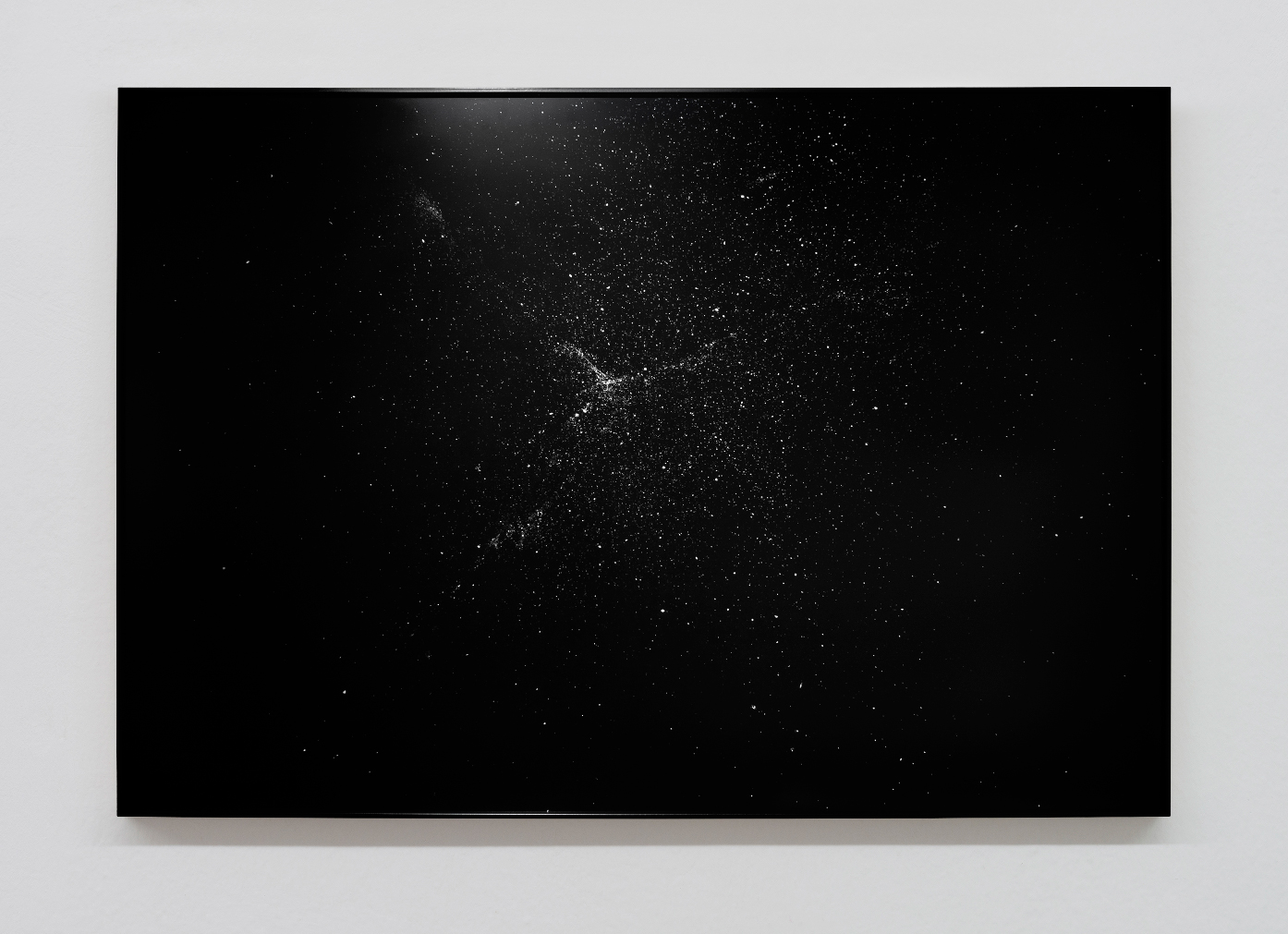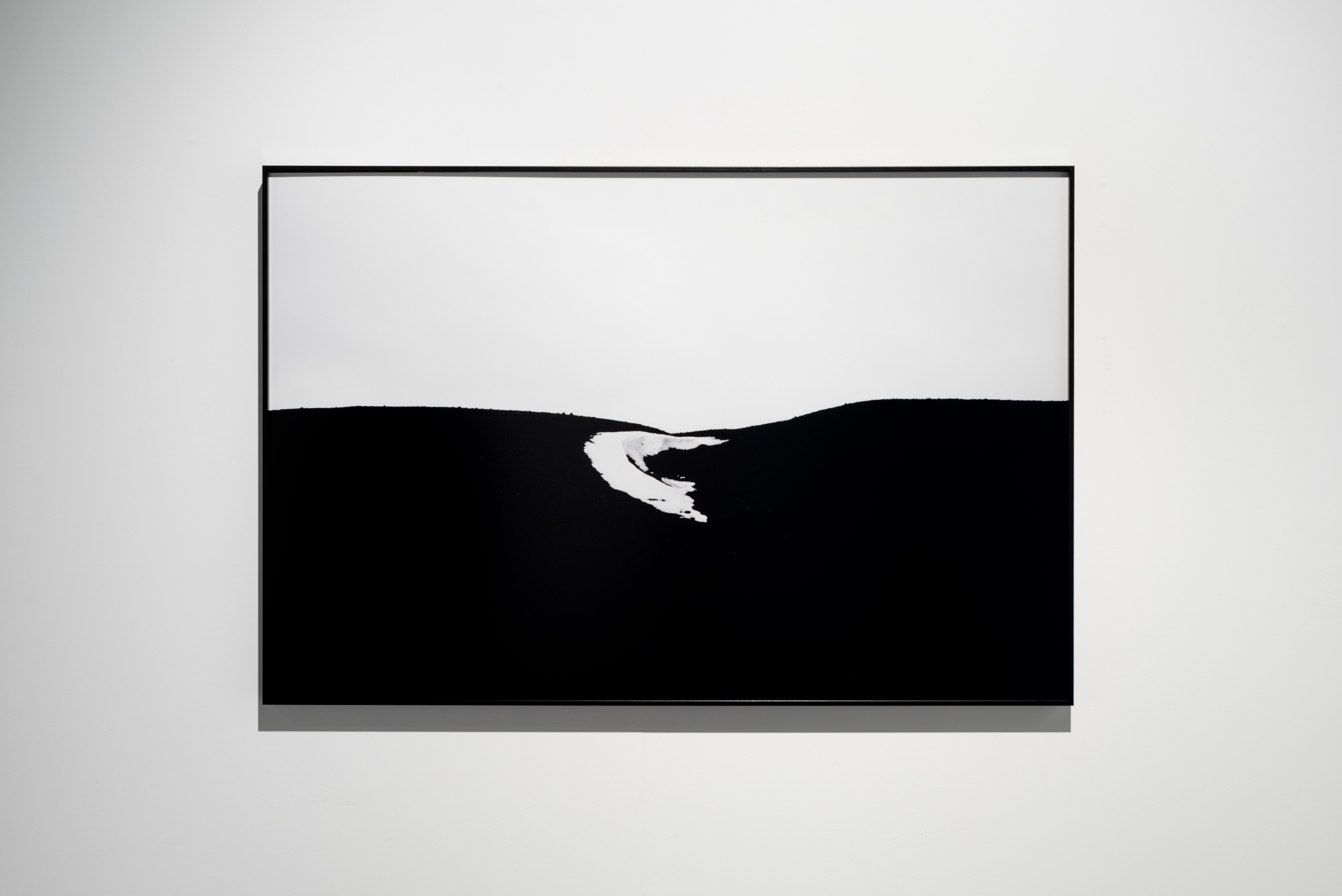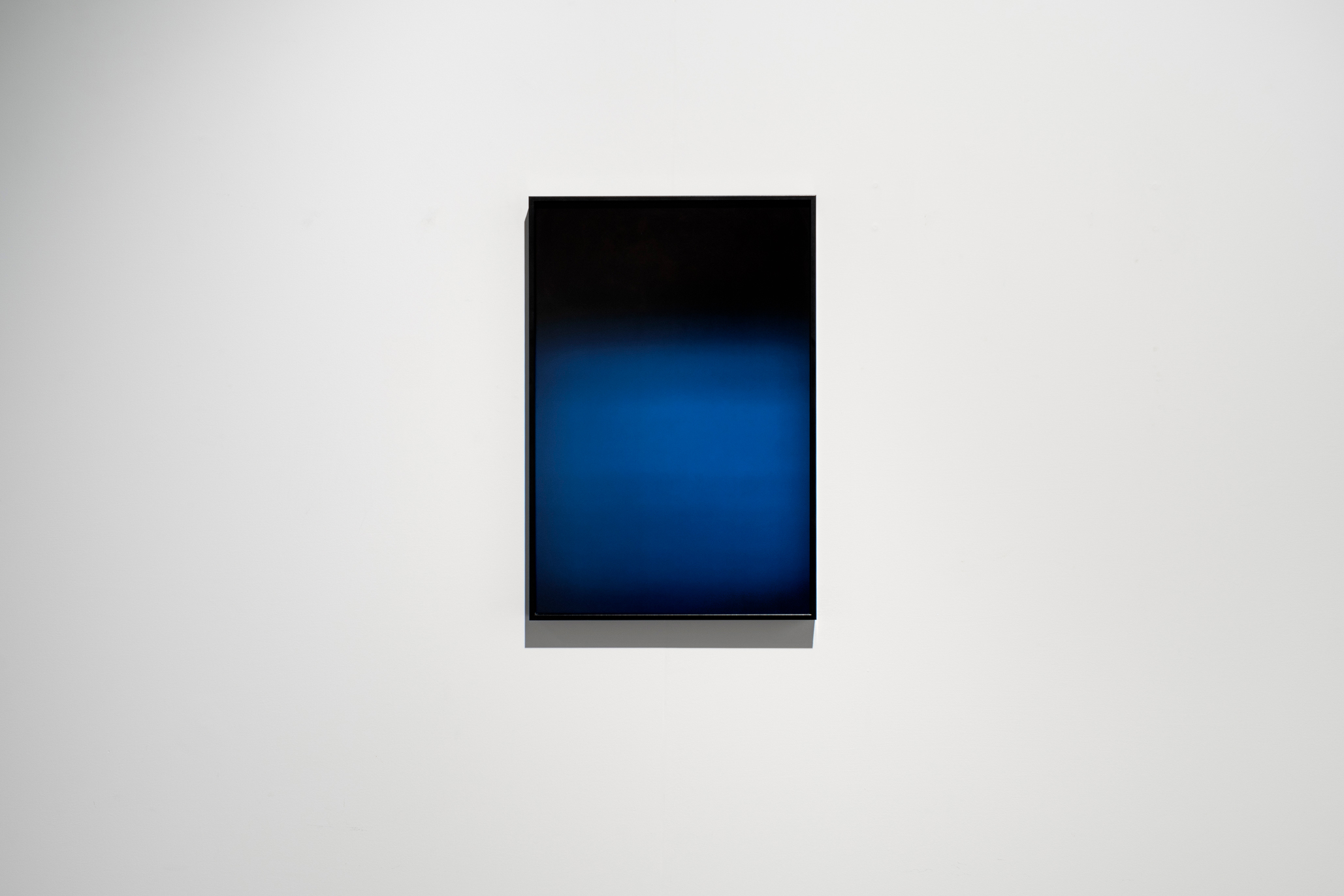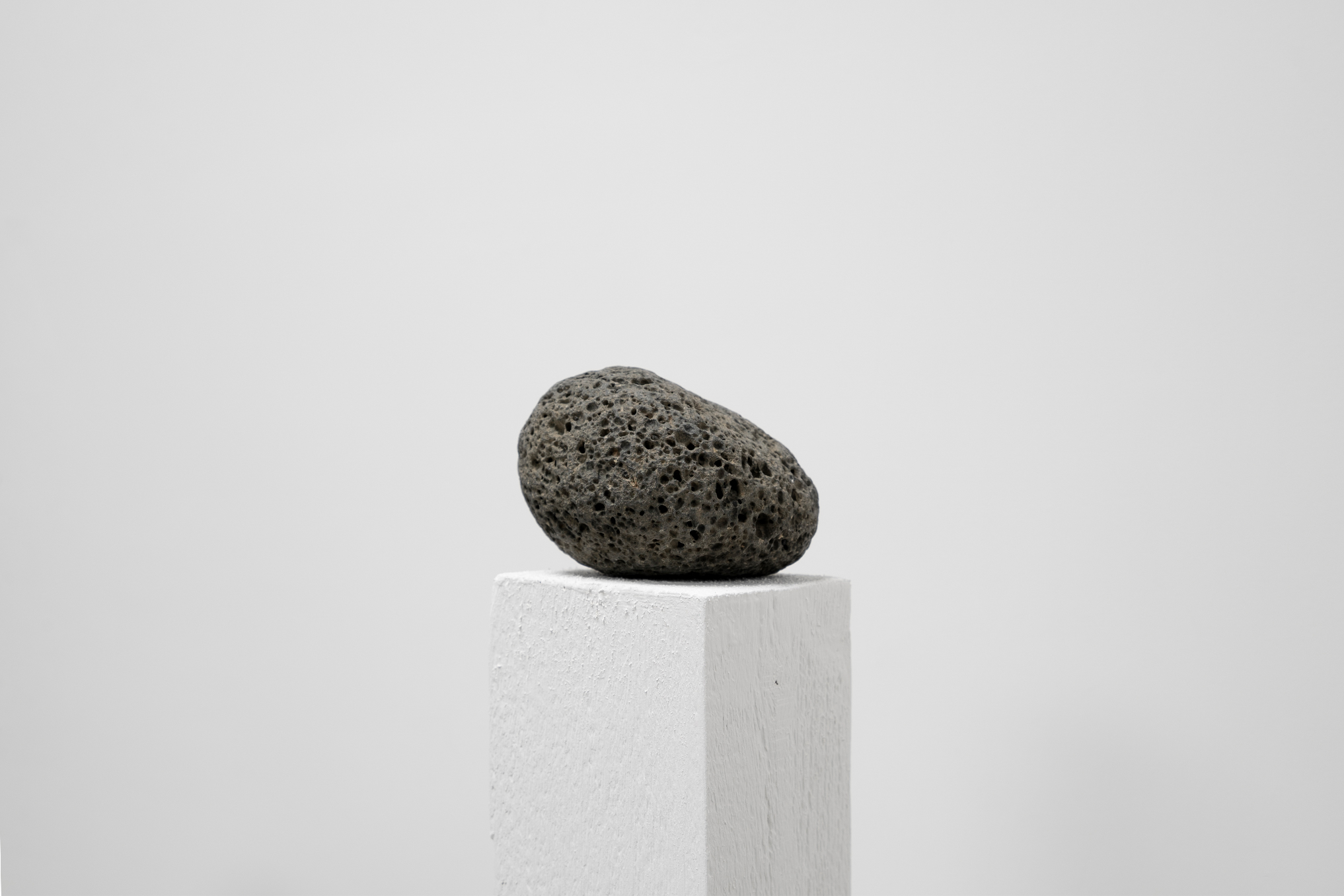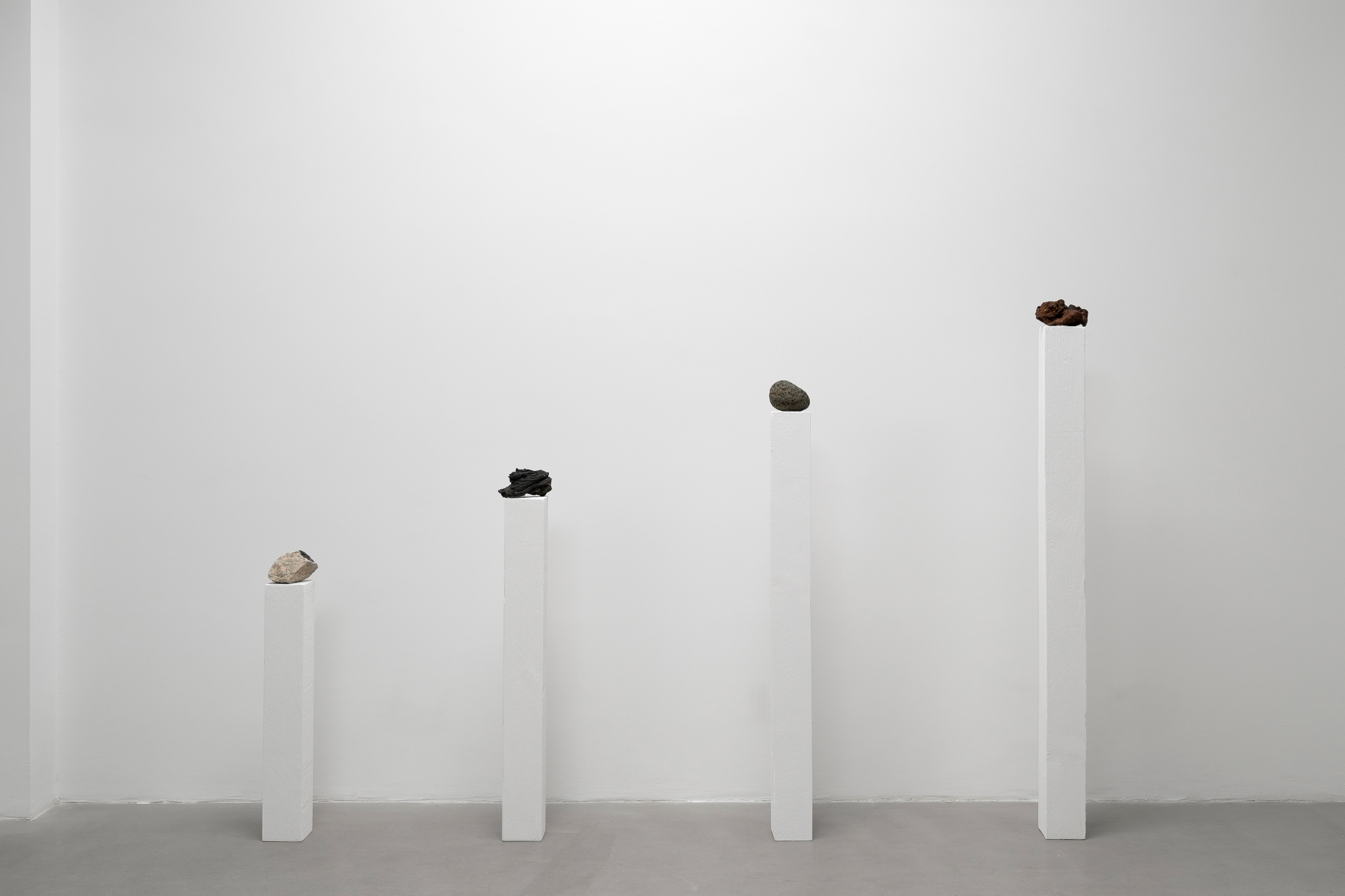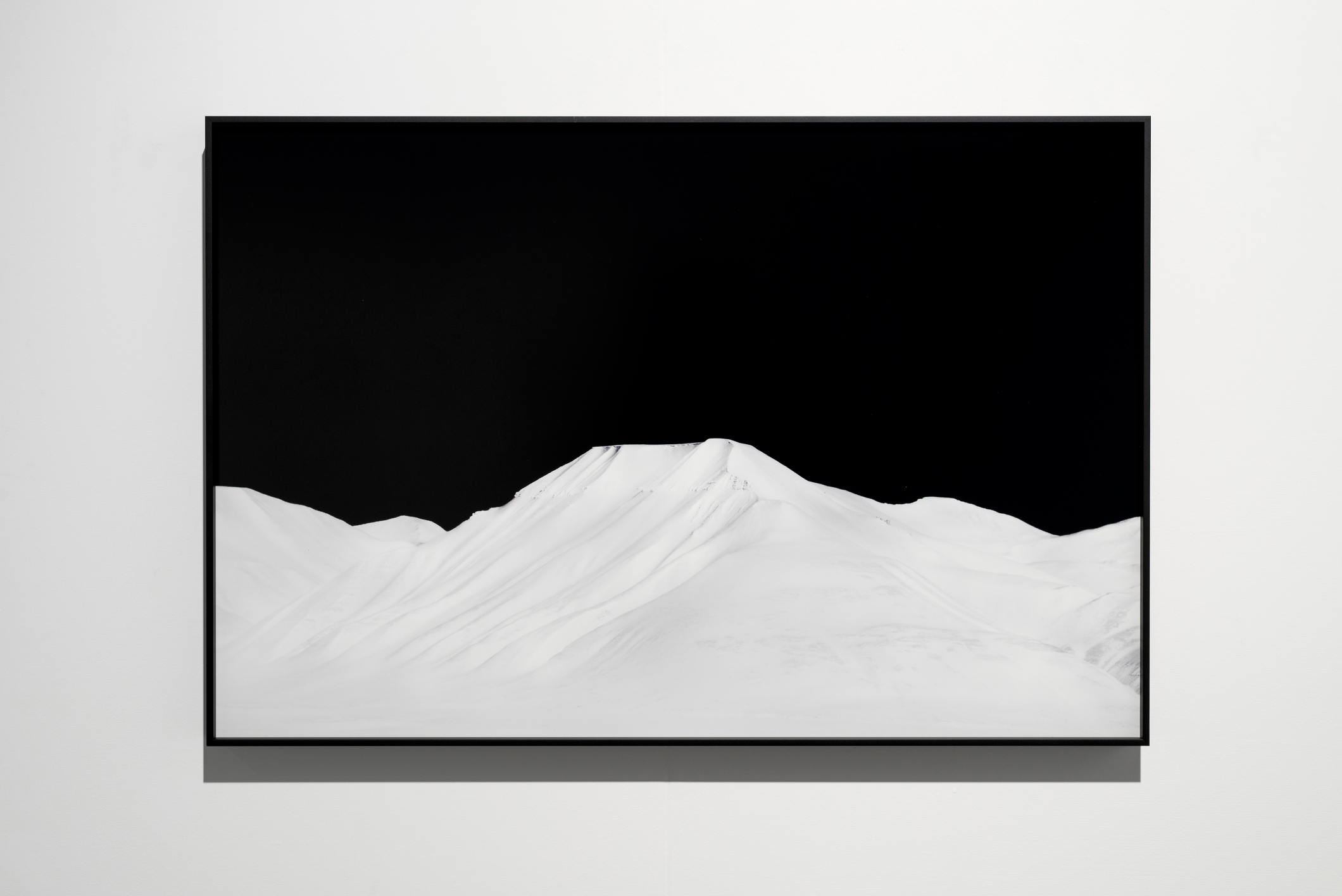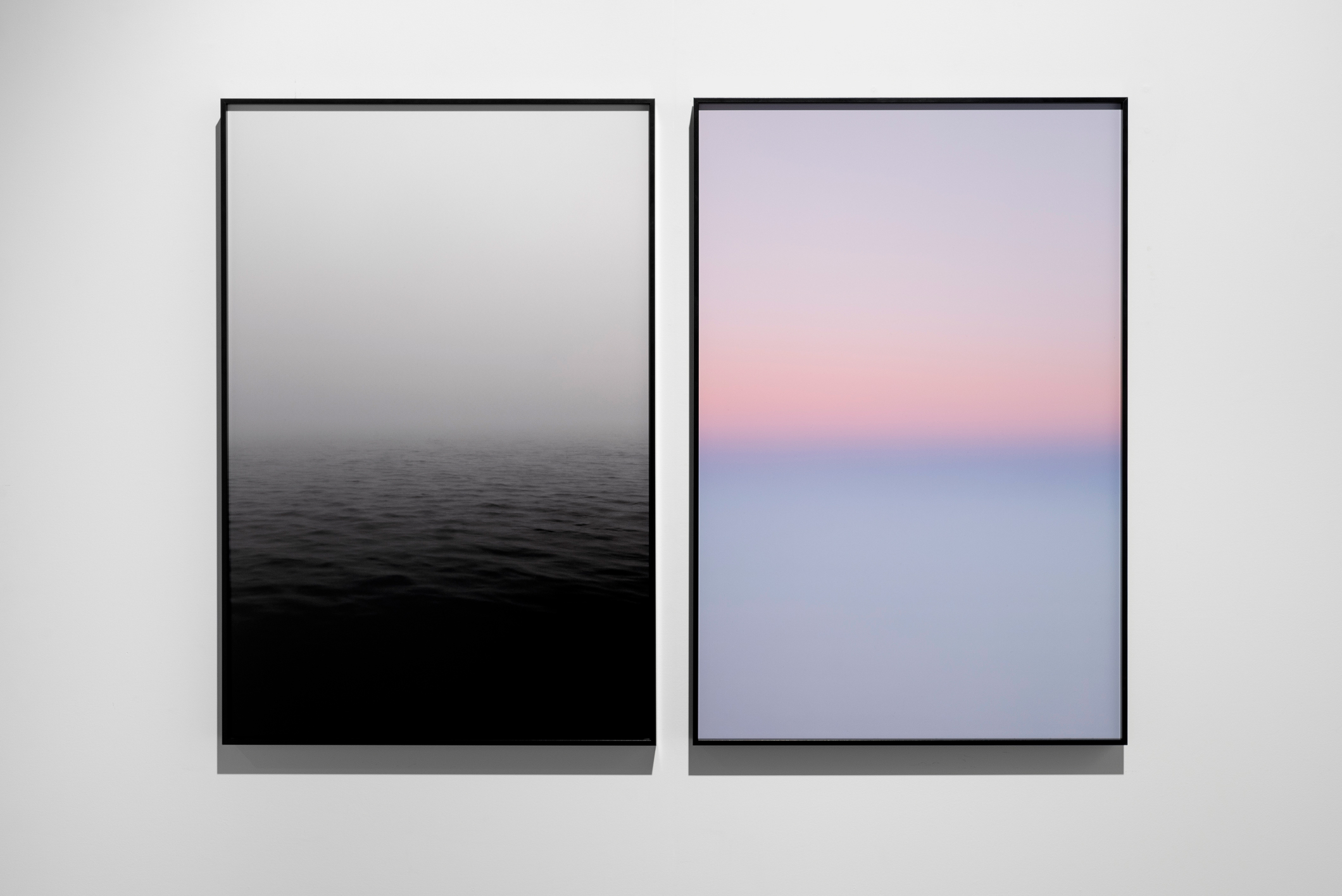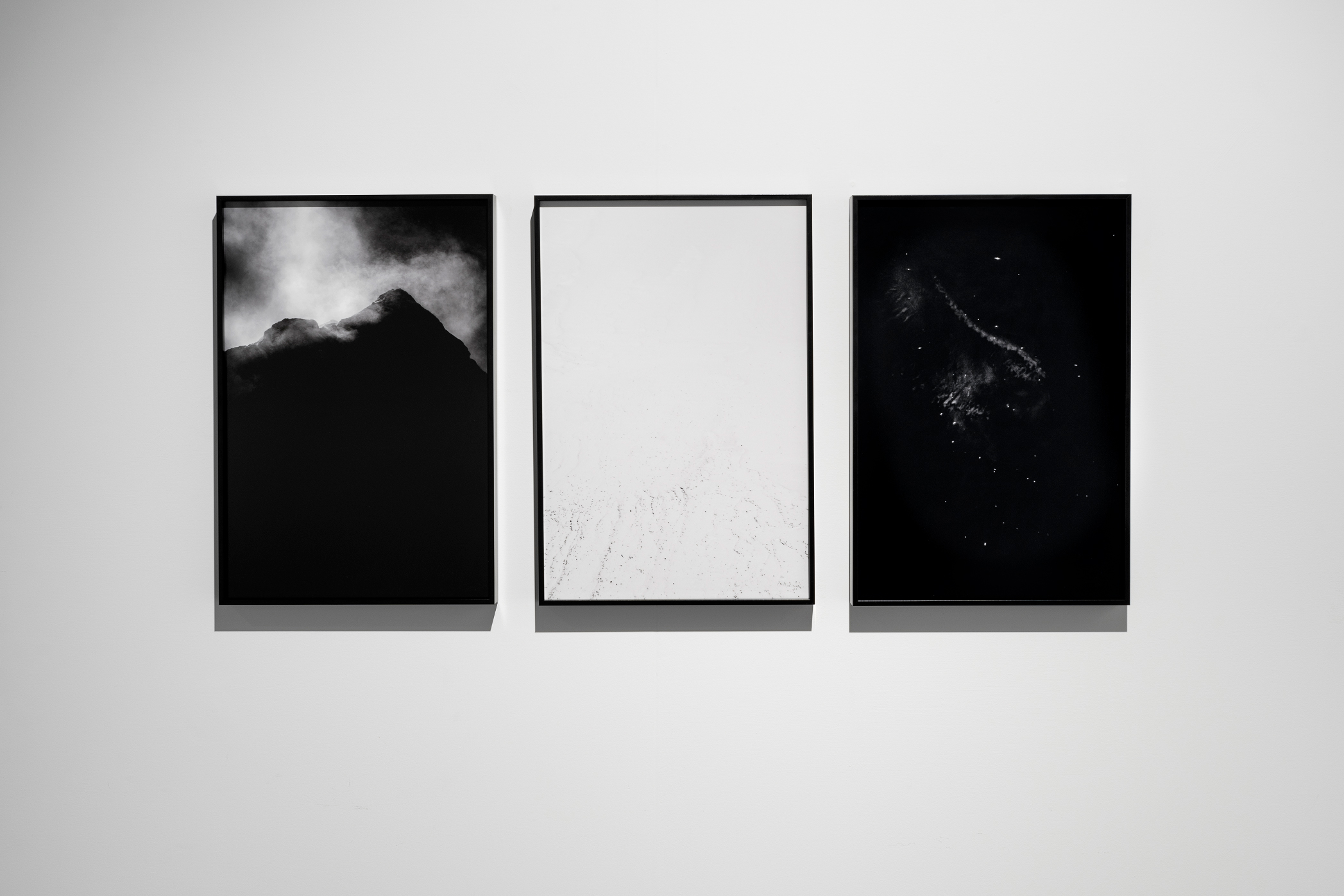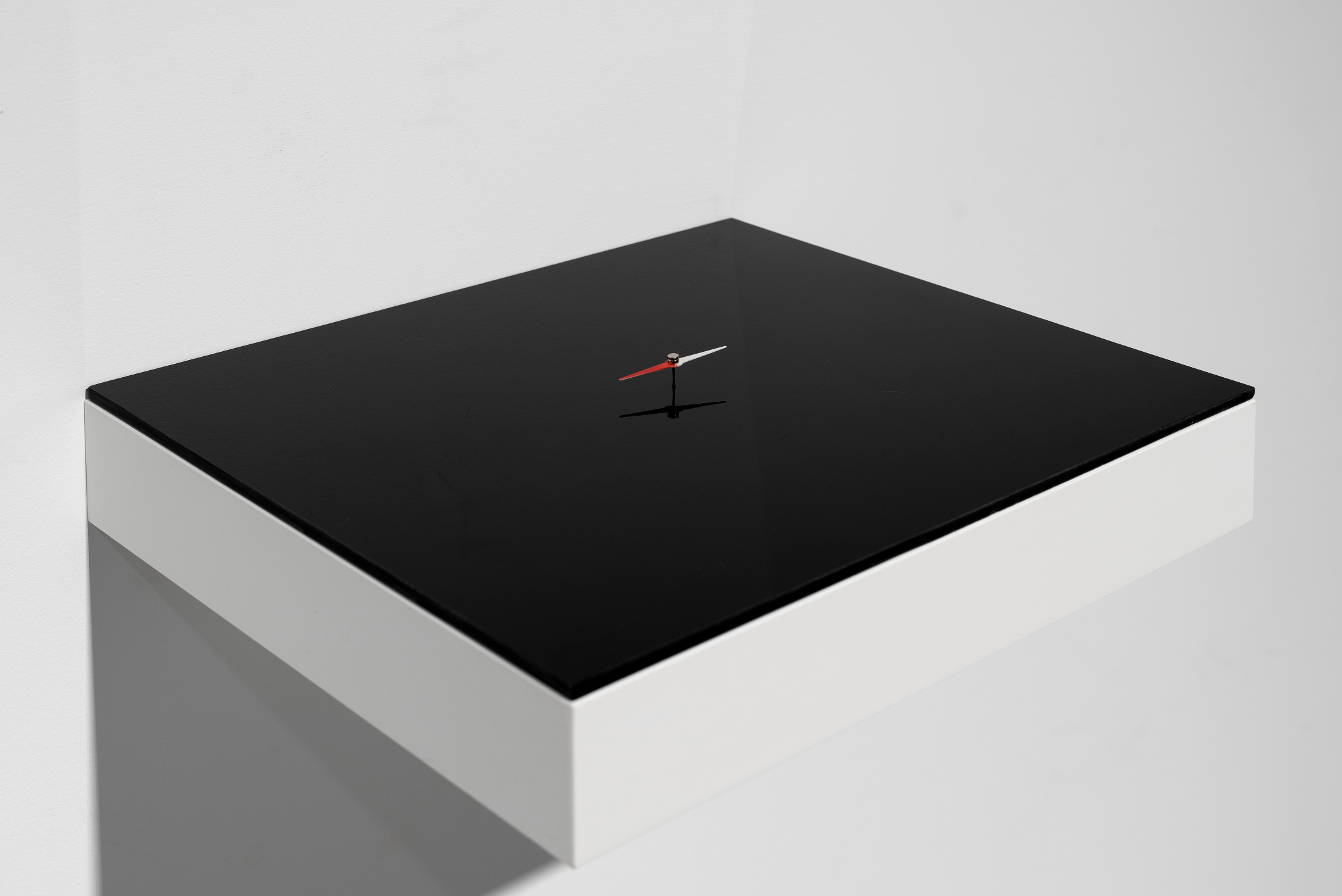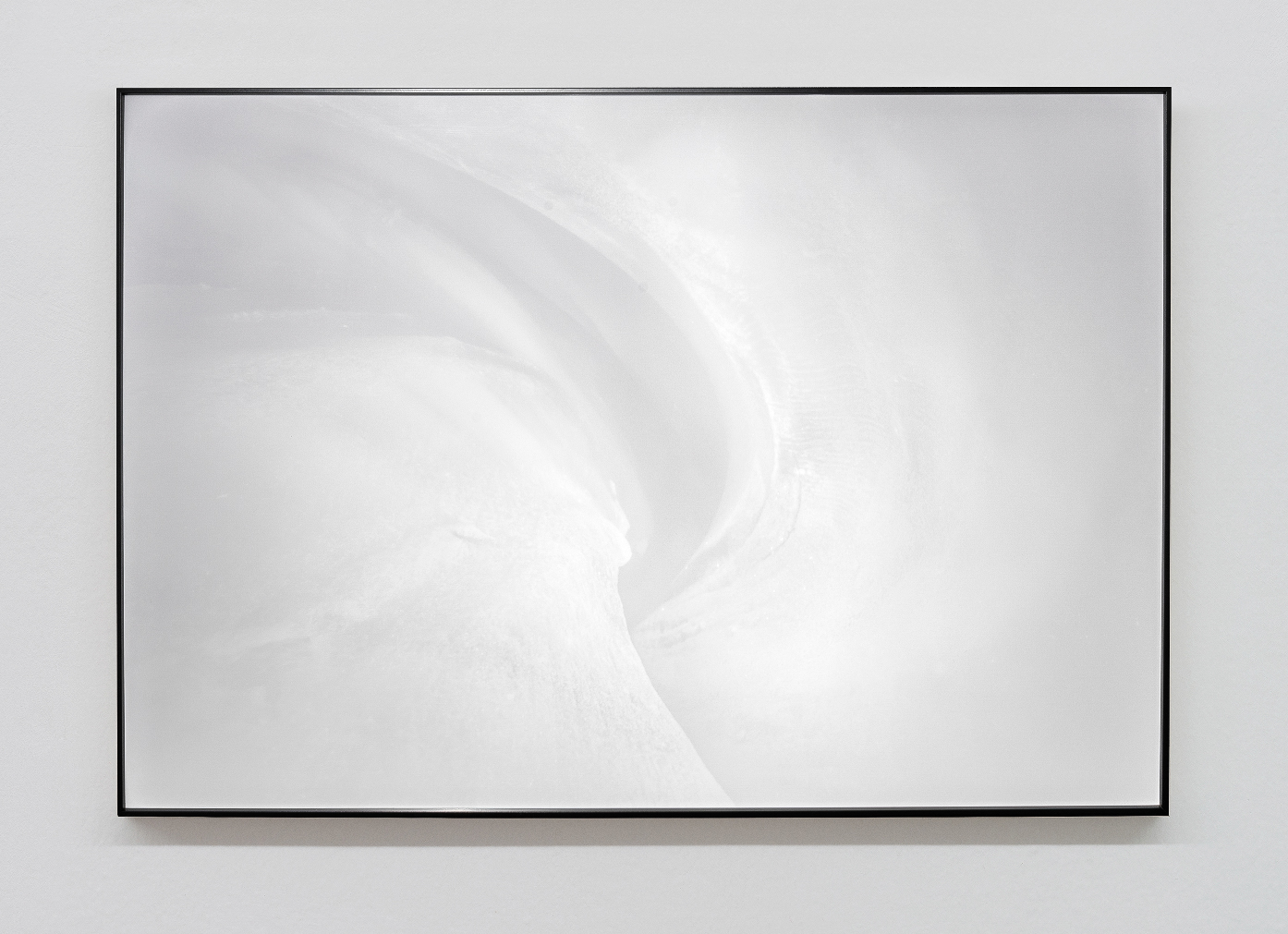DE MAGNETE
JON GOROSPE
-
In ‘De Magnete’, Jon Gorospe settles in the symbolic and transcendent tradition of landscape to update it and, from there, to say his own thing. In his images it is not only the landscape object that makes an appearance but also - and above all - an encompassing space that constantly appeals to immensity: the immensity of the immense and the immensity of the interior.
The interiority to which Gorospe points and which he unfolds in this series is enigmatic and convulsive. To refer to it, on more than one occasion he has made use of a particular idea of the sacred: the interweaving of beauty and the terrible (Rilke) or between beauty and its revelations (its epiphanic emergencies).
Gorospe uses a series of black and white landscapes in which he has interspersed several colour photographs in which only intense gradients are visible. These gradients have a dual function. On the one hand, they are to the whole what the legend is to the map: the coordinates that guide its reading. On the other, they represent a sort of formless vent, a beyond, a behind.
In landscape images there is another element that also plays a strategic role: scale, or rather the absence of scale or, as in fractal geometry, the dissolution of scale. The large and the small intermingled and indistinct, but equally vertiginous, equally incomprehensible.
It was William Gilbert, the English scientist who, at the end of the 16th century, discovered that the mysterious directionality of compasses had its origin beyond the matter that constituted them: our planet turned out to be a gigantic magnet. He demonstrated this in his work De magnete, magneticisque corporibus, et de magno magnete tellure [On magnets, magnetic bodies and the great terrestrial magnet].
Since Gilbert's pioneering discovery, our knowledge of the magnetic poles has increased steadily. We know that they are mobile and that they tremble, that they do not coincide with the geographical poles, that they reverse with a certain regularity, that they affect sleep, that they are the cause of the northern lights, that they modify the path of light and, consequently, our perception of it.
A north turned into an unknown by Gilbert. A magnetised north, nomadic and mineral, archaic and variable, in which Gorospe has now rehearsed the very diverse forms of astonishment and contemplation.
Rubén Á. Arias
-
«En "De Magnete", Jon Gorospe se instala en la tradición simbólica y trascendente del paisaje para actualizarla y, desde ahí, decir lo suyo. En sus imágenes no es solo el objeto paisajístico lo que hace acto de presencia sino también —y sobre todo— un espacio abarcador que apela constantemente a la inmensidad: la inmensidad de lo inmenso y la inmensidad de lo interior.
La interioridad hacia la que Gorospe apunta y que despliega en esta serie es enigmática y convulsa. Para referirse a ella, en más de una ocasión se ha servido de una idea particular de lo sagrado: el ensamblaje entre la belleza y lo terrible (Rilke) o entre la belleza y sus revelaciones (sus emergencias epifánicas).
Gorospe se sirve, para ello, de una serie de paisajes en blanco y negro entre los que ha intercalado varias fotografías en color en las que tan solo se ven intensos degradados. Degradados que desempeñan una función doble. Por un lado, son al conjunto lo que la leyenda es al mapa: las coordenadas que pautan su lectura. Por otro, suponen una suerte de respiradero informe, un más allá, un detrás.
En las imágenes paisajísticas hay otro elemento dotado también de un papel estratégico: la escala o, mejor, la ausencia de escala o, como en la geometría fractal, la disolución de la misma. Lo grande y lo pequeño entremezclados e indistintos, pero igualmente vertiginosos, igualmente inabarcables.
Fue William Gilbert, el científico inglés que, a finales del siglo XVI, descubrió que la misteriosa direccionalidad de las brújulas tenía su origen más allá de la materia que las constituía: nuestro planeta resultaba ser un gigantesco imán. Así lo demostró en su obra De magnete, magneticisque corporibus, et de magno magnete tellure [Sobre los imanes, los cuerpos magnéticos y el gran imán terrestre].
Desde el descubrimiento pionero de Gilbert, nuestro conocimiento sobre los polos magnéticos no ha dejado de aumentar. Sabemos que son móviles y que tiemblan, que no coinciden con los polos geográficos, que se invierten con cierta regularidad, que afectan al sueño, que son los causantes de las auroras boreales, que modifican la trayectoria de la luz y, en consecuencia, nuestra percepción de la misma.
Un norte convertido en incógnita por Gilbert. Un norte imantado, nómada y mineral, arcaico y variable, en el que Gorospe ha ensayado ahora las muy diversas formas del asombro y la contemplación.
Rubén Á. Arias
